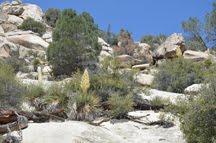I
am drawing today, so a few notes about warm-ups, and drawing lines:
Do
you have rituals to get you in that creative art groove? I definitely do, as
the blank sheet of paper is a scary thing. The very first thing I do is to
clean my drawing space...sometimes it starts with my entire house (....it
depends on how artistically blocked I am), sometimes it is just a matter of
tidying up my drafting table. That done, I arrange the materials I am going to
use, usually just a 0.5 mm mechanical pencil, and some kind of paper. For warm
ups, the backsides of printouts that are in the recycle box work great.
I
sit down, I breathe, I straighten my posture by imagining that I am suspended
from that string attached to the top of my head. Strong string! It lets the
body hang, the back is straightened not by pushing with muscles up, but by suspension
from the gods above....lord help me if they remember that I am just their
puppet.... I breathe again, deeply, reminding my body that it is oxygen that
gives me life. Life, what a wonderful thing: to be able to sit at my drawing
table and prepare to draw. Ahhh....
On
to the warm-up mechanics. Pencil in hand, paper below, arms hanging at my side,
gently. Let go of tension in shoulders, in hands. Breathe. First lines are
straight, I pull them towards me, making them flow with my exhale. Breathe in,
pull line towards me, making line as straight as possible, relaxed as possible.
I fill the page with pulled straight lines. Note: Some have excellent hand-eye
coordination naturally, (especially if they haven't had too much caffeine), a
few have a natural tremor and will never be able to remove the quiver from
their lines.
Next
step: curved lines. Same process. Breathe in, relax, exhale, pull the line
toward me, but this time in an arc, and drawing the arc from the inside, as if
I am the center of this drawing universe, and the line I am creating encircles
me. Curved lines, smooth and beautiful, drawn from the inside, like frowns, but
with smiley energy. Repeat, repeat, repeat.
Next
step: parallel lines. Or, more precisely, equidistant lines. This is the tough
stuff in botanical art. Master this and you can go a long way. What are stems?
Just parallel lines. Draw two lines with one line heavier (wider) than the
other, and you have drawn a shaded stem. Start with the straight lines. Try
drawing a few lines equidistant from the straight lines you have already drawn.
Not so easy, is it? Now, think about what you are doing. You have to look at
the line you have already laid down, and let your eyes rest on it a few
millimeters (or an eighth of an inch, if you will), in front of the point of
your pencil. The eye coordinates with the hand. They eye looks and leads. Leads
the hand to follow the course of the line, keeping the second line at the same
distance from the first. Parallel lines. If this is tough for you, rest
assured, it was tough for me too! Practice, practice, practice. Good drawing
skills must be learned; think of yourself as a musician, honing your skills.
Next
step. Lines equidistant from the curved lines you have drawn. As in the last
paragraph, but follow the curved lines.
Final
step. Circles. Draw circles. Let the lines flow smoothly, start and stop
without breaking. Try using the whole arm, or whole body to create the circle.
The goal is to have a nice round circle, with the lines meeting perfectly. No
overlap. Try big circles; try little ones. Lots of little ones (great exercise
if you are stuck on hold).
If
you have managed to read through this, and are not an artist or an aspiring
artist, wow, thank you! I will tie it in to life a bit. Good botanical art
needs good lines, good lines come from focus, and practice, and relaxation.
Good botanical art is a meditation. An escape? Perhaps. To me, a journey to a
place that I really enjoy.










